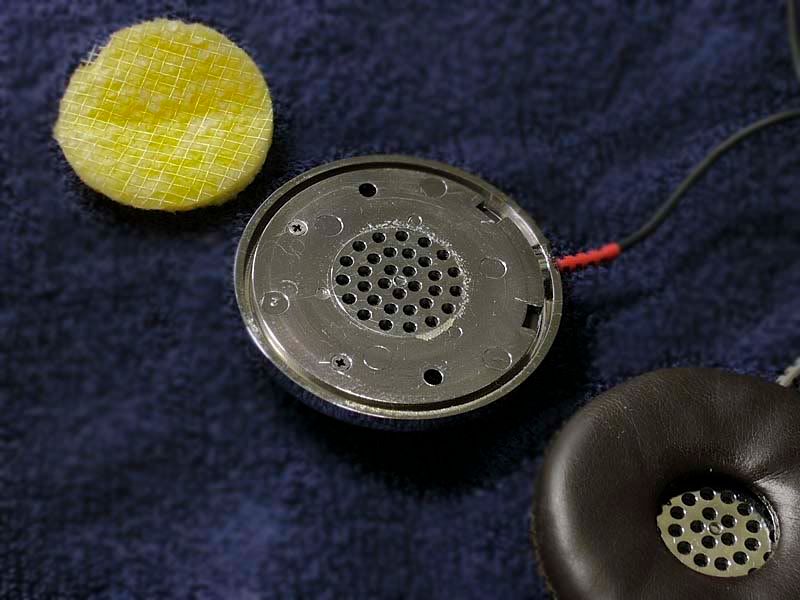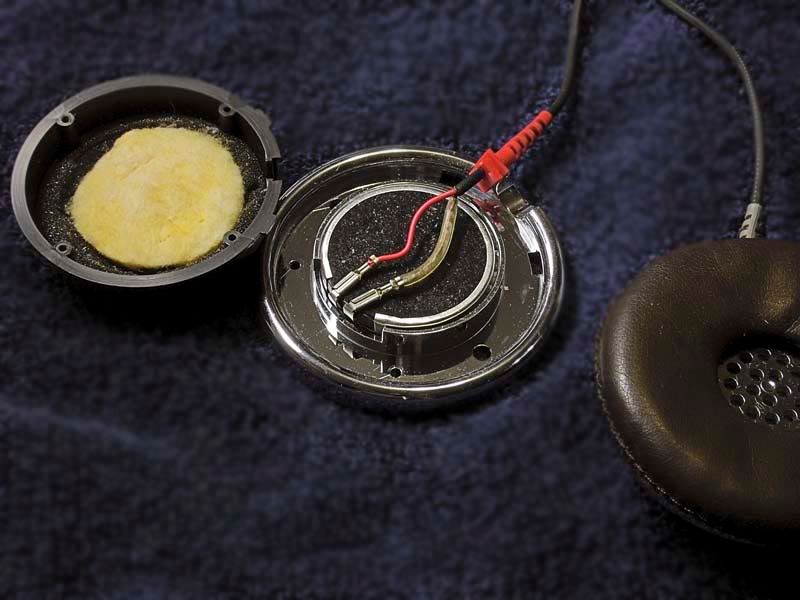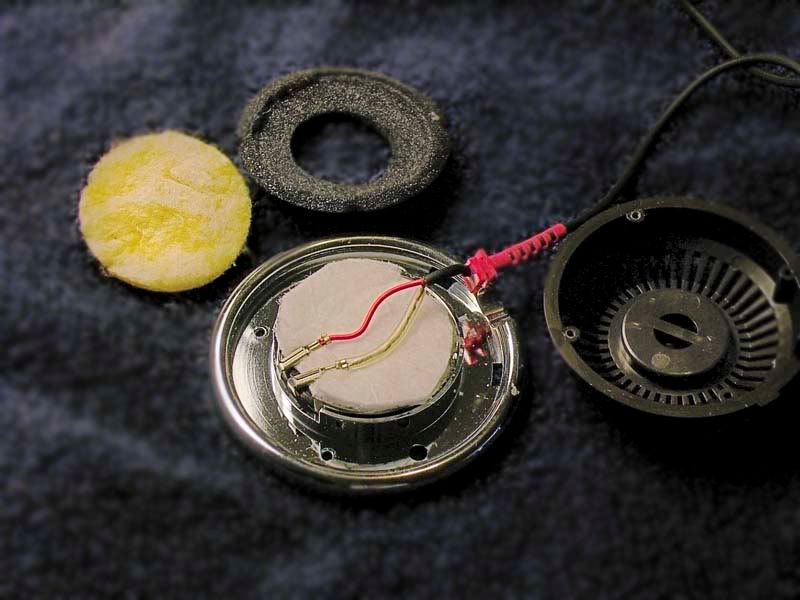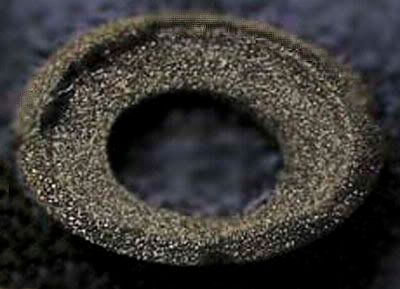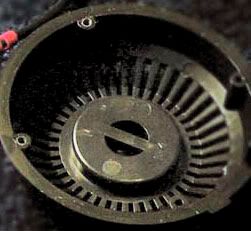wualta
Orthodynamic Supremus
- Joined
- Sep 12, 2004
- Posts
- 4,596
- Likes
- 146
Those of you who are Audio-Technica fans may be interested to know that the company started in the headphone biz with a full line of different types of 'phones (no buds, though-- they were yet to come). There were several decent electret electrostatics beginning in the mid-70s, along with some nicely styled but boring-sounding dynamics, and then in the late '70s came the ATH-1 and ATH-2. These were isodynamics with a miniaturized driver. A few of you have the ATH-2-- it's favored by folks who really dig the colors of the '70s: olive green, chocolate brown, pumpkin orange [shudders]. Oh, and chrome. Ya gotta have chrome. Chrome plated plastic, that is. The ATH-2 has these in spades.
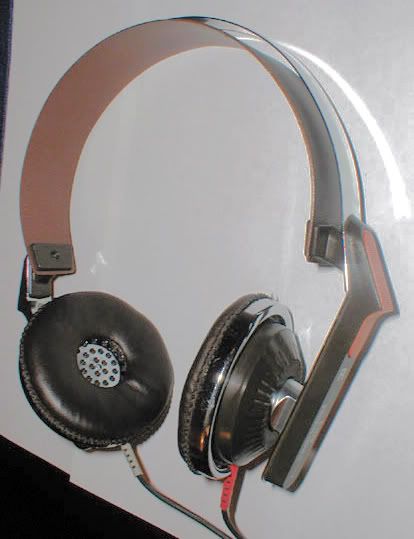
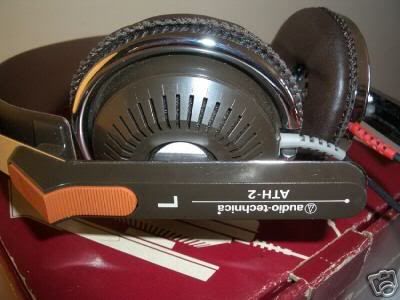
Yes, it's another early arch-and-strap headband. In this case the strap is a rather stiff piece of plastic, but the ATH-2 isn't that heavy anyway, though on my head it's a little clampy. Why would we want to rip it apart? To add extra damping. Why'd we wanna do that? To suppress the midranginess and tighten up the bass and bring up the treble. All good reasons. Turns out, most consumer headphones using this type of driver were criminally underdamped, which left them, instead of better than any dynamic of their day, worse, maybe intentionally so-- but if you want the whole sad design-engineering-marketing saga behind the marketplace failure of the isodynamic headphone as a type, you'll have to read the amazing, interminable Orthodynamic Roundup thread, at least the first three pages. The upshot is, we have to finish the job the manufacturers started but left half-done at best, if we want to bring out these headphones' true potential, which is considerable.
So first we pop the left and right cups off the headband pop-bead style. Clever construction. Then we peel off the earpads. All seventies supra-aural 'phones have earpads stuck on with the famous Japanese doublesided extra-thin tape. I think much of Japan is still held together with this tape. It lasts forever and never loses its ability to stick. You can peel off the earpads many times and still stick them back on if you go slowly and keep fingerprints and dust away from them.
Peeling the pads usually reveals several phillips-type self-tapping screw heads. In the case of the ATH-2, there are only two screws. Wonder why?

Right now we just want to look around and take note of what we see.
The baffle plate is a thick chunk of chrome-plated plastic with perforations (visible at far left in photo) to let the sound reach your ears, even though those perforations don't in any way line up with the perforations in the disc magnets of the drivers (shame!). Will that affect the treble? Yes, though not as much as we might think. Tiny holes don't present that much of an obstacle, though we wish the obstacle wasn't there.
The back cup (photos at top of page) is open and properly vented-- very unusual among isodynamics of this vintage!. And look, the driver already has a thin nonwoven damping pad glued to it-- looks like A-T is trying to make this driver work the way it's supposed to. By the way, the driver is stuck to the baffle with a gooey tape or glue, so at least we know there's an airtight seal there. Don't want that backwave getting loose in the earcup, despite what your AKG K501 is whispering in your ear.
It turns out that the ATH-2's driver is about 3dB more efficient, but visually, it's the same as the one in the Realistic Pro 30:
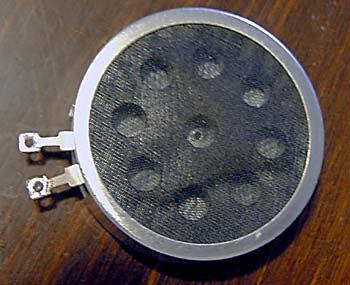
Compare the holes in the driver to those holes in the chrome baffle. Mmmm, not optimal.
Impedance freaks should note that the impedance of both the ATH-2 and Pro 30 is about 32 ohms.
But there's more stuff to find.
The baffle is thick, which means even if we drill some bigger holes to expose more of the driver, there'd be a short tunnel between the driver and our ears, which means a minor cavity resonance. Not a huge problem.. We could saw out the perforated part of the baffle completely and bring the driver forward until it was flush with the rest of the baffle... though I'm not going to do that because it would spoil the stock '70s vibe that so many love. I intentionally make all my suggested mods completely reversible, because what sounds right to me may not be to everyone's liking, plus there's the resale value of a vintage 'phone to consider.
We know from a brisk listening session that the bass is not great and the treble is droopy, even with A-T's damping measures in place. Looking for the source of the trouble, we look some more and.. whuzzat? Holes in the baffle? Yes, there are two good-sized holes, one of which can be seen in the photo above, on the right of the baffle. What're they for? They're not screw holes. They don't seem to serve any useful function. The lip of the back cup covers them, but why do manufacturers risk the bass response of their headphones by doing these things? Why assume that the cup will seal perfectly to the baffle all the way around?
Then just to the left and right of the passageway for the headphone cord at the bottom of the baffle you can barely see two slots; two tabs from the back cup engage these, and that's why there are only two screws. Hmm. What happens when you let backwave from the back of the driver into the earcup area? That's right, the evil bass cancellation. So those slots will be filled with yellow-tak, even though the earpads cover them-- I don't trust earpads or loose-fitting tabs to block bass frequencies. So maybe by doing some stealthy yellow-takking we'll have rockin' bass out of these things. That's good, because if we need to add a lot of damping, the phones will tend to pick up a lot more treble, and we want the two to balance.
Finally, note that the vented back cup uses only a thin donut of opencell foam to damp the vents, and we know from working on the Realistic Pro 30 that we can gain quite a bit of low bass by damping vents with felt. Open-cell foam always makes a lousy damping material.
Hey, it's not perfect, but being one of the very few open-back isodynamics, this thing has possibilities. More to come.
.


Yes, it's another early arch-and-strap headband. In this case the strap is a rather stiff piece of plastic, but the ATH-2 isn't that heavy anyway, though on my head it's a little clampy. Why would we want to rip it apart? To add extra damping. Why'd we wanna do that? To suppress the midranginess and tighten up the bass and bring up the treble. All good reasons. Turns out, most consumer headphones using this type of driver were criminally underdamped, which left them, instead of better than any dynamic of their day, worse, maybe intentionally so-- but if you want the whole sad design-engineering-marketing saga behind the marketplace failure of the isodynamic headphone as a type, you'll have to read the amazing, interminable Orthodynamic Roundup thread, at least the first three pages. The upshot is, we have to finish the job the manufacturers started but left half-done at best, if we want to bring out these headphones' true potential, which is considerable.
So first we pop the left and right cups off the headband pop-bead style. Clever construction. Then we peel off the earpads. All seventies supra-aural 'phones have earpads stuck on with the famous Japanese doublesided extra-thin tape. I think much of Japan is still held together with this tape. It lasts forever and never loses its ability to stick. You can peel off the earpads many times and still stick them back on if you go slowly and keep fingerprints and dust away from them.
Peeling the pads usually reveals several phillips-type self-tapping screw heads. In the case of the ATH-2, there are only two screws. Wonder why?

Right now we just want to look around and take note of what we see.
The baffle plate is a thick chunk of chrome-plated plastic with perforations (visible at far left in photo) to let the sound reach your ears, even though those perforations don't in any way line up with the perforations in the disc magnets of the drivers (shame!). Will that affect the treble? Yes, though not as much as we might think. Tiny holes don't present that much of an obstacle, though we wish the obstacle wasn't there.
The back cup (photos at top of page) is open and properly vented-- very unusual among isodynamics of this vintage!. And look, the driver already has a thin nonwoven damping pad glued to it-- looks like A-T is trying to make this driver work the way it's supposed to. By the way, the driver is stuck to the baffle with a gooey tape or glue, so at least we know there's an airtight seal there. Don't want that backwave getting loose in the earcup, despite what your AKG K501 is whispering in your ear.
It turns out that the ATH-2's driver is about 3dB more efficient, but visually, it's the same as the one in the Realistic Pro 30:

Compare the holes in the driver to those holes in the chrome baffle. Mmmm, not optimal.
Impedance freaks should note that the impedance of both the ATH-2 and Pro 30 is about 32 ohms.
But there's more stuff to find.
The baffle is thick, which means even if we drill some bigger holes to expose more of the driver, there'd be a short tunnel between the driver and our ears, which means a minor cavity resonance. Not a huge problem.. We could saw out the perforated part of the baffle completely and bring the driver forward until it was flush with the rest of the baffle... though I'm not going to do that because it would spoil the stock '70s vibe that so many love. I intentionally make all my suggested mods completely reversible, because what sounds right to me may not be to everyone's liking, plus there's the resale value of a vintage 'phone to consider.
We know from a brisk listening session that the bass is not great and the treble is droopy, even with A-T's damping measures in place. Looking for the source of the trouble, we look some more and.. whuzzat? Holes in the baffle? Yes, there are two good-sized holes, one of which can be seen in the photo above, on the right of the baffle. What're they for? They're not screw holes. They don't seem to serve any useful function. The lip of the back cup covers them, but why do manufacturers risk the bass response of their headphones by doing these things? Why assume that the cup will seal perfectly to the baffle all the way around?
Then just to the left and right of the passageway for the headphone cord at the bottom of the baffle you can barely see two slots; two tabs from the back cup engage these, and that's why there are only two screws. Hmm. What happens when you let backwave from the back of the driver into the earcup area? That's right, the evil bass cancellation. So those slots will be filled with yellow-tak, even though the earpads cover them-- I don't trust earpads or loose-fitting tabs to block bass frequencies. So maybe by doing some stealthy yellow-takking we'll have rockin' bass out of these things. That's good, because if we need to add a lot of damping, the phones will tend to pick up a lot more treble, and we want the two to balance.
Finally, note that the vented back cup uses only a thin donut of opencell foam to damp the vents, and we know from working on the Realistic Pro 30 that we can gain quite a bit of low bass by damping vents with felt. Open-cell foam always makes a lousy damping material.
Hey, it's not perfect, but being one of the very few open-back isodynamics, this thing has possibilities. More to come.
.










